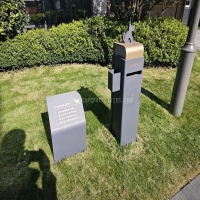Welcome to the website for landscape facilities products and knowledge.
How does marble’s polish affect water beading?
The polish applied to marble surfaces plays a crucial role in determining how water beads on its surface. A high-quality polish creates an ultra-smooth finish, reducing surface porosity and enhancing the marble's natural hydrophobic properties. When water encounters a well-polished marble surface, it forms distinct beads rather than spreading out, thanks to the minimized friction and sealed microscopic pores.
This phenomenon occurs because polishing fills tiny imperfections and creates a more uniform surface, allowing water droplets to maintain their shape due to surface tension. The smoother the polish, the more pronounced the beading effect, which also helps protect the marble from water stains and etching.
Regular polishing not only improves aesthetics but also extends the marble's lifespan by reducing water absorption. For optimal results, professionals recommend using diamond abrasives or specialized polishing compounds to achieve a mirror-like finish that maximizes water repellency. Homeowners can maintain this effect with pH-neutral cleaners and periodic re-polishing to preserve the surface's smoothness and water-beading capabilities.
The relationship between polish quality and water beading serves as an excellent indicator of a marble surface's condition and protection level, making it a key factor in both residential and commercial marble maintenance.
Related search:

Recommendation
Outdoor cat and dog feces trash can; Community pet trash can; Metal multi-color design